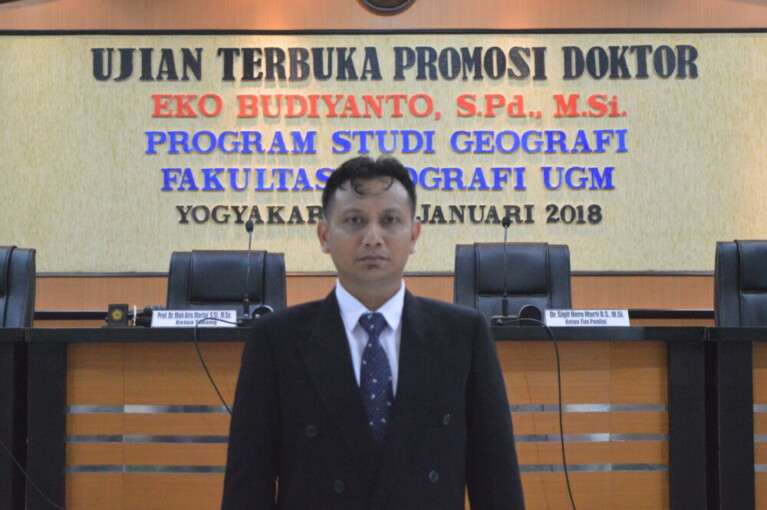
Most of Gunungkidul’s karst areas of Gunungsewu are highly vulnerable to pollution whereas this area has plenty water resource.
“Gunungsewu karst area has abundant water potential, but generally speaking, the condition of underground water is polluted,” said Eko Budiyanto in his doctoral promotion at Faculty of Geography UGM on Monday (29/1).
He said generally karst areas have high vulnerabilities and risks to land pollution and degradation, water pollution, landslide, flooding, and drought.
“Interaction between basic characteristics of carbonate with pressures from natural and human activities have caused the karst ecosystem to get vulnerable,” he said.
To protect the groundwater of Gunungsewu against pollution, he said vulnerability and risk assessment model is needed that is appropriate, efficient, applicable and feasible for repeat. He believed that remote sensing data and geographic information system have big potential to address this issue.
In his dissertation, Eko studied spectral characteristics and vulnerability level toward research observable areas, parameter and model of vulnerability and risk assessment of karst groundwater to pollution, as well as zonation of vulnerability and risk of karst groundwater toward pollution, and model of other utilisation.
“The practice of this research is expected to give an actual illustration on the condition of karst groundwater vulnerabilities and risk of Gunungsewu towards pollution of karst groundwater,” said the geography lecturer from Universitas Negeri Surabaya, East Java.
He concluded that there were differences in terms of spectral characteristics and vulnerabilities level in the research area. Water catchment areas of Sanglor 2, Ngobaran, Puring, Selonjono, Kali Cacahan, and Mudal were stated as of high level vulnerability, while water catchment areas of Cerme and Pok Tunggal are of medium level, and water catchment area of Slulu is of low vulnerability.
The research also produced model of vulnerability and risk assessment of karst groundwater pollution as well as guidelines for land utilisation of those areas.
Based on vulnerability value and risk index, land use in karst area of Gunungsewu is directed towards protection area of land function, function improvement area, area for land function restoration, and area for maintenance of land function.
“Model analysis showed that most of karst areas of Gunungsewu have to be directed towards area for maintenance of land function,” said Eko.


